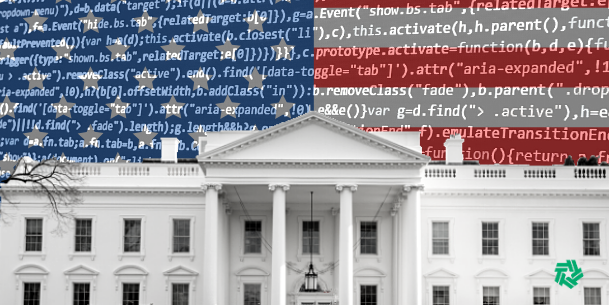
OMB outlines plan to maximize COVID-era IT modernization funds from Congress
The Biden administration, following a windfall of IT modernization dollars Congress approved through COVID-19 spending, is outlining its vision of how it will make...
Best listening experience is on Chrome, Firefox or Safari. Subscribe to Federal Drive’s daily audio interviews on Apple Podcasts or PodcastOne.
The Biden administration, following a windfall of IT modernization dollars Congress approved through COVID-19 spending, is outlining its vision of how it will make the most of this money.
The Office of Management and Budget released a plan Friday detailing projects made possible through three governmentwide IT modernization funds, as well as upcoming plans on where it will spend more money.
The IT Operating Plan offers insights into how the administration will spend the remaining hundreds of millions of IT modernization dollars Congress approved as part of the American Rescue Plan (ARP).
Federal Chief Information Officer Clare Martorana said the plan, in part, serves as a response to Congress, which in its omnibus spending bill for 2022, directed OMB to come up with a strategy to “maximize the impact” of money granted to several IT modernization funds.
“We recognize the significant investment that Congress has made in securing and modernizing federal IT and have assembled this plan to explain how we ensure the wise investment of each dollar Congress has entrusted to us towards its highest use — creating the most impact for the American people,” Martorana wrote.
The plan outlines future spending across four priorities: cybersecurity, IT modernization, digital-first customer experience and data as a strategic asset.
The funding outlined in the plan falls into three governmentwide funds.
OMB plans to spend what’s left of the $200 million Congress gave its IT Oversight and Reform (ITOR) Account to hire technical experts who can lead modernization projects across government.
That hiring push includes software engineers, IT specialists, designers, product managers and acquisition specialists.
“Technical talent is essential to accomplish the mission and fundamental duties of the government while avoiding the risks that come with outsourcing. They also provide essential guidance and feedback to industry partners and contractors to ensure project requirements are met,” the plan states.
The General Services Administration will use what’s left of the $150 million that went to its Federal Citizen Services Fund to improve customer experience across several dozen agencies and programs designated as High-Impact Service Providers.
The Technology Modernization Fund, which received an unprecedented $1 billion through ARP, will use its remaining funds in part to identify new opportunities for shared services across government.
These funds collectively backed the creation of Login.gov, a shared identity solution that the Biden administration sees as the backbone for moving more government services online.
Most of these funds also led to the development U.S. Web Design System (USWDS) in 2015, which helped agencies build websites that have a consistent look at feel to them.
ITOR generally supports IT projects at OMB and the U.S. Digital Service. Recent projects backed by ITOR include COVIDTests.gov, the IRS’s website for the expanded child tax credit, and an overhaul of the Agriculture Department’s Supplemental Nutrition Assistance Program.
FCSF, which supports an array of dot-gov websites, including USA.gov, data.gov, digital.gov and search.gov also funds GSA’s Technology Transformation Services and its new U.S. Digital Corps.
The TMF in fiscal 2021 invested $321 million in IT modernization projects that generally demonstrated a strong return on investment.
The fund’s most recent investments will help the National Archives and Records Administration overcome a backlog in requests for military services records from veterans and their families.
The TMF is also helping USDA invest in zero-trust cybersecurity architecture, given the agency’s role as a shared service provider to other agencies and as the source of many public-facing government services.
The fund has gone through waves of feast and famine, with Congress approving little to no funding for some fiscal years.
While the TMF has more money than it ever has since its creation in 2017, the TMF board has 130 proposals from 60 agencies and components, totaling over $2.5 billion.
Sen. Mark Warner (D-Va.) who championed efforts to pass the Modernizing Government Technology Act that created the TMF, is leading a coalition seeking $300 million for the TMF in the FY 2023 budget.
“This is an effort worth pursuing, recognizing that it’s both going to take more funding and continued improvement of the system to make sure we get the full value of that dollar,” Warner said in an interview.
Warner said the goals of the TMF remain a “work in progress,” and pointed to the recent Government Accountability Office findings that show some projects haven’t recouped as much savings as initially expected.
“The problem is, the scope of the problem is so large, and this is a new enough initiative,” Warner said.
“We still need to do a better job of thinking about capital investments in a different way. The Technology Modernization Fund is at least a step in the direction,” he added.
U.S. Digital Corps welcomes its first fellows
GSA’s U.S. Digital Corps, meanwhile, is welcoming its first cohort of fellows into government service.
U.S. Digital Corps selected about 40 fellows from more than 1,000 applications. The program is focused on bringing early career technologists into government to contribute to high-impact efforts across the federal government.
Dave Zvenyach, the director of GSA’s Technology Transformation Services, said fellows are working at 13 agencies to create a “more effective, equitable government.”
Among the projects, fellows will join the Veteran Affairs Department’s digital experience product team, where they’ll work on online tools to help veterans access VA benefits.
Another group of fellows will work with the Cybersecurity and Infrastructure Security Agency to help implement the Biden administration’s executive orders on cybersecurity and zero trust.
CISA’s fellows will also help the agency develop vulnerability, risk and resilience assessments.
Fellows will also work will assist the Centers for Medicare and Medicaid Services in developing online tools meant to help the public locate and access behavioral health treatment.
Zvenyach said working out of TTS will work towards simplifying the public’s access to benefits and services on USA.gov – both the English and Spanish versions of the site.
TTS fellows will also help secure Login.gov from security threats, and work with federal employees to develop ideas of how technology can improve the public’s experience with the 10X program.
The Office of Personnel Management will bring on two fellows to improve human capital management across the federal government.
Martorana said the U.S. Digital Corps reached out to traditionally underrepresented communities in tech across 47 states and territories.
“Creating new ways to bring technology talent into the federal government is crucial to our efforts to protect, serve, and inspire the American people in today’s digital age,” she said.
Copyright © 2025 Federal News Network. All rights reserved. This website is not intended for users located within the European Economic Area.
Jory Heckman is a reporter at Federal News Network covering U.S. Postal Service, IRS, big data and technology issues.
Follow @jheckmanWFED
Related Stories




